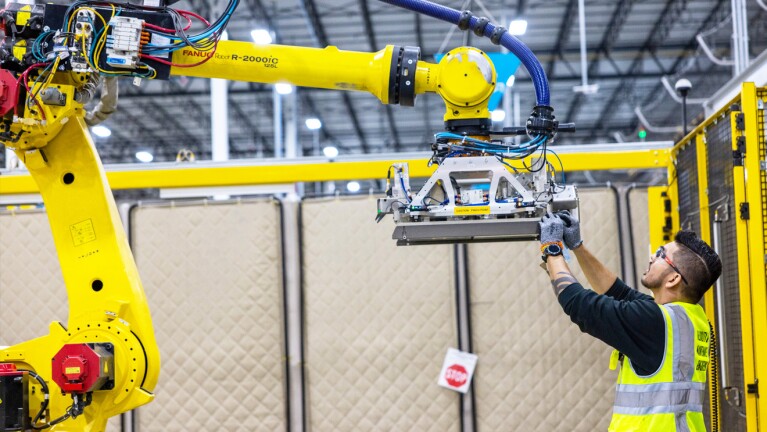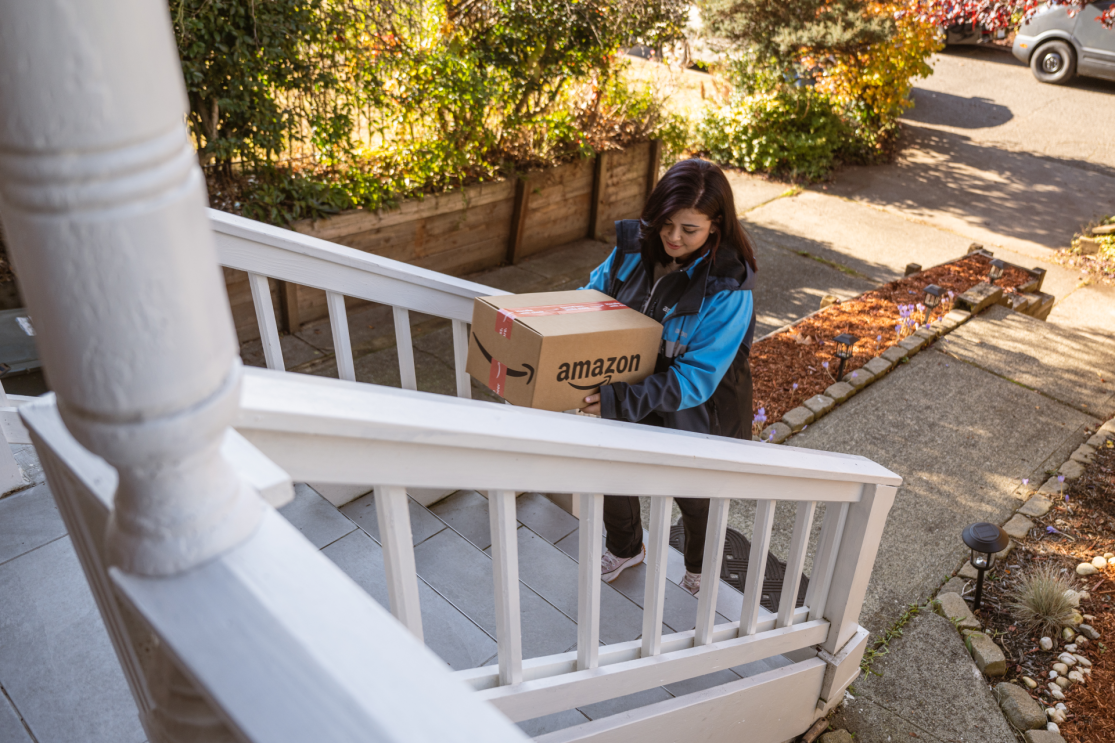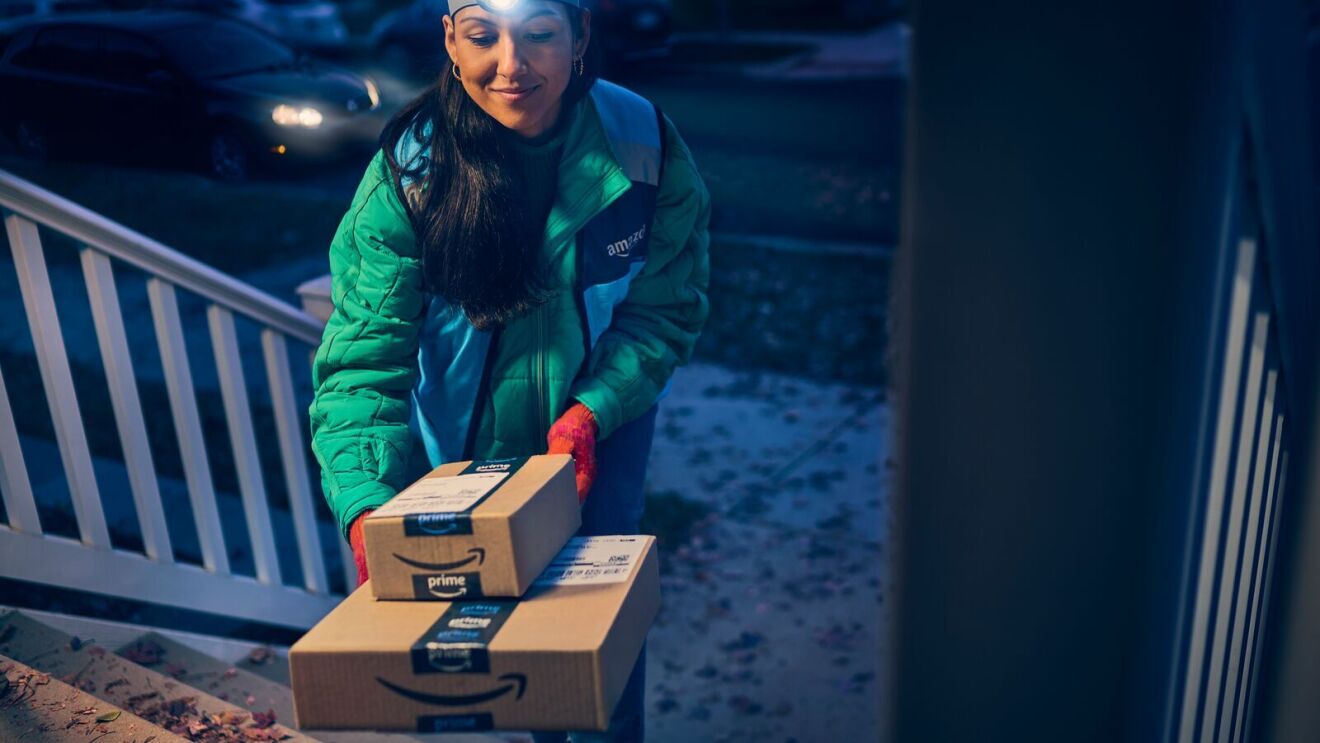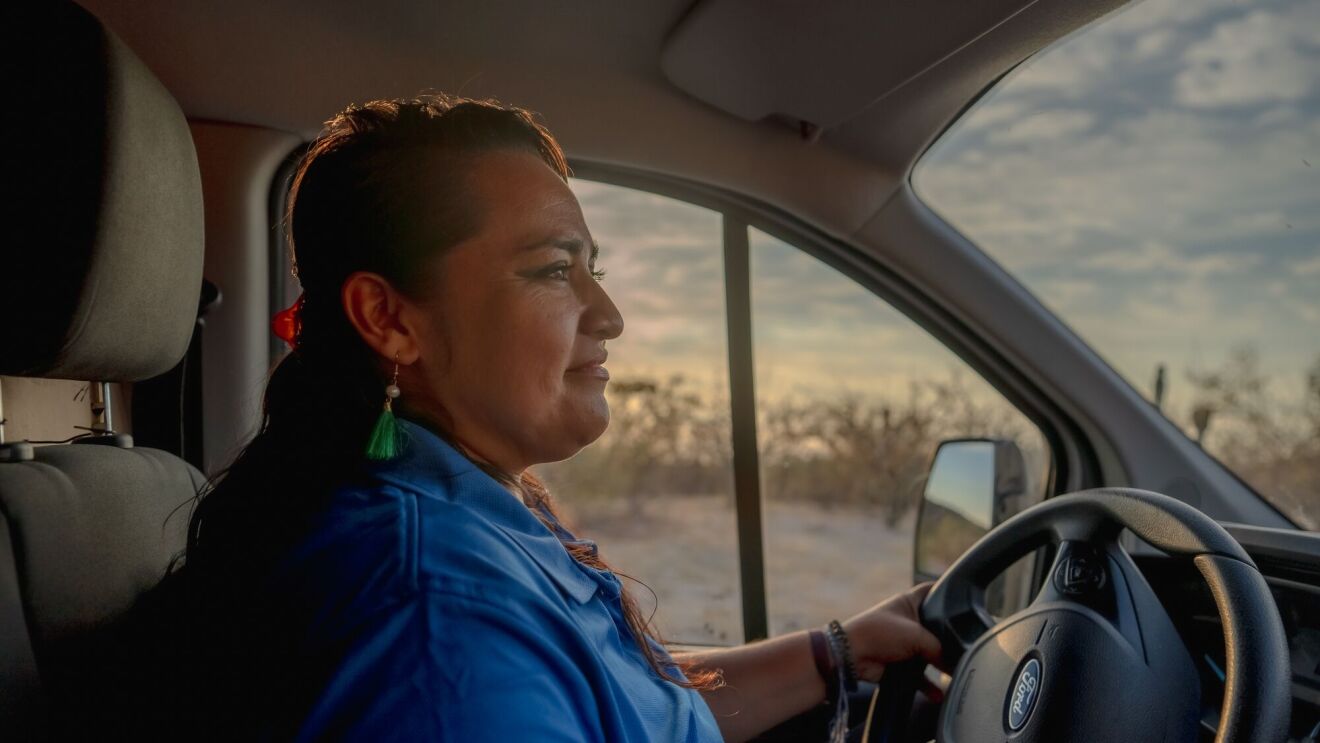Page overview
Focusing on safety for Amazon Flex delivery partners with Amazon Smile lights, decals, and branded light-up vests.
While they have the option to wear Amazon-branded vests, Amazon Flex DPs use their own vehicles, so customers aren’t always aware they’re delivering Amazon orders. That’s why we recently started testing new products to create familiarity for Amazon Flex DPs with customers, which we believe will make a big impact.

We’re currently testing Amazon smile lights—small, portable lights in the shape of the iconic Amazon smile that can be easily affixed to the dash or sun visor of a vehicle, indicating to customers the vehicle is making deliveries. We’re also testing Amazon decals that stick onto the side of a vehicle, further indicating the driver is delivering packages for Amazon. Early results from these two pilots show that 90% of the DPs surveyed felt safer while making deliveries, and over 80% of drivers felt more identifiable by customers. We know how important vehicle identification is to drivers, but we also know that once the driver gets out of the vehicle, it’s just as important that they are clearly identifiable and can be seen to avoid any misunderstanding with customers and the community. This is why we’ll also pilot light-up branded logo vests that Amazon Flex DPs can wear while delivering packages.
Another way we’re helping enhance the visibility of Amazon Flex DPs, who drive their own vehicles to make deliveries, is the option to use a feature called Driver Profiles. This feature allows customers to view the first name and photo of the driver responsible for their package directly on their order details page. These features appear in the Amazon app once the driver is 10 stops or less away from making their delivery. We’re also developing Vehicle Profiles, which will display the make, model, and color of the driver’s vehicle, also in the Amazon app. By making it easier to identify an individual or vehicle as delivering packages for Amazon, we hope to create a sense of familiarity and confidence for both the driver and customer.
Delivery drivers use a smartphone app to complete their routes—the app includes the number of vehicle stops and the number of packages that need to be delivered at each stop. Drivers previously had to engage in more than 10 interactions within the app at each location. That could amount to thousands of repetitive interactions in one day for the driver.
By leveraging machine learning and delivery history, we’ve made changes to reduce the number of in-app interactions by 30%. We’re working to further reduce this, aiming to reach a 50% reduction by end of year. By combining screens, such as delivery photo confirmation and the overall delivery confirmation screens, we’re making the delivery experience a lot easier for drivers. Based on the success of these initiatives, we have ambitious plans to continue making the experience even more intuitive in the coming year.
We’ve heard drivers say that sometimes they’re not sure where to drop off packages at a customer’s address, especially if they’re new and haven’t been to that location before. One way we’re attempting to solve that problem this year is by showing drivers a photo of the ideal location to drop off a package at that location—based on a past successful delivery. Going further, when a driver captures a delivery photo, we’ll be able to validate in real-time, using computer vision, that the photo matches prior photos associated with successful deliveries. We’ll also leverage machine learning models to rank past photos based on numerous factors, like recency and identifiable attributes (flower pot, doormat), and compare this data to the photo just captured, so the driver can ensure it’s a match and proceed with the delivery.
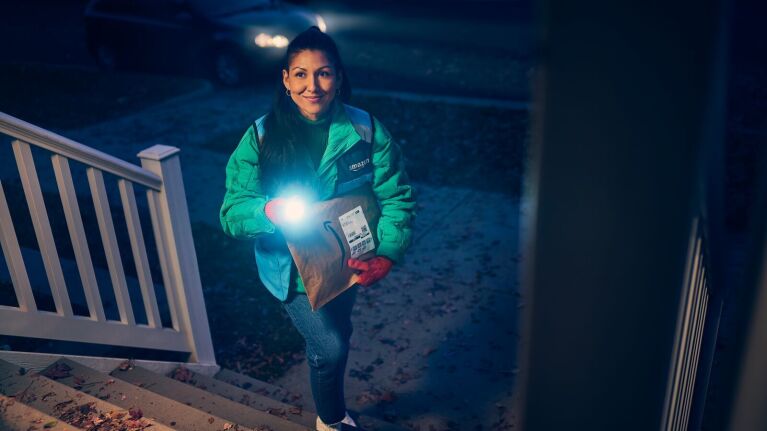
We understand that seamless and secure package deliveries are important to both customers and drivers. To ensure a smooth delivery for all, we’re testing a new feature in the delivery app to automatically notify some customers before the driver’s arrival, reminding them to secure dogs and prepare a safe and well-lit environment for delivery. This expands on an existing feature that enables drivers to send similar push notifications manually. We know that notifying the customer about a driver’s arrival has the potential to improve the experience and reduce delays for customers, and by automating this simple task, we’re reducing the steps drivers need to take to deliver a package.
Trending news and stories


